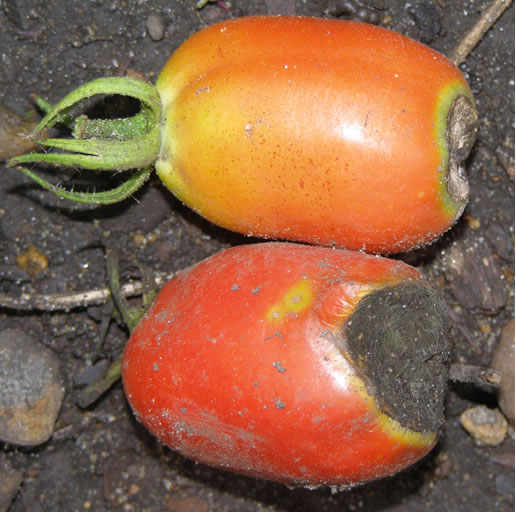Blossom end rot is a very common issue that occurs in tomatoes and other crops like summer and winter squash. It is one of the most common issues experienced when growing tomatoes. It is commonly related to calcium availability in the soil at the time that the blossoms are being formed and flowering. Typically the rot that occurs is due to the malformation of the skin on the end of the fruit compromising the skin, which allows the secondary fungi and bacteria to get in and cause the fruit to rot.
Many suggest that more calcium just needs to be added to the soil. This is true as long as your soil pH is not too high (>7.0). These deficiencies that occur are often found during cool damp periods in spring primarily when the soil biology is not actively working and soil is still cold (<50 degrees F). Many folks tend to just add “climatic” lime, and in most cases it works for the next year, but is observed to stop the end rot due to the calcium becoming more available in the soil as it warms up (not due to the added lime). It isn’t bad to add the lime, but it is best to have the soil tested and evaluate what the soil pH is to determine if it needs to be raised. The ideal range is 6.2-7.0. If you get outside this range it will tend to tie up other nutrients and that is also not good.
If you are still concerned about blossom end rot, the best thing to try is to monitor soil temps as your plants are growing. This can be done with a simple cooking thermometer placed into the soil to about 2-3 inches. It is best to evaluate it both in morning and at night as you can have dramatic changes in NE MN. If the soil stays mostly below 50 degrees often it will not have the calcium release and if the plants are setting blossom it might cause issue.
If you experience several days of cold soil temps and are concerned about the reoccurrence of blossom end rot, it is best to find a very soluble Ca form. One of your best options is called Calcium Nitrate. This can be mixed at very low rates (1 cup / 5 gal water) and when mixed well, poured on each plant at about 1 quart. This will deliver a very concentrated form of Ca to the plant roots and not alter the pH to a level above the 7.0. Calcium Nitrate should be found at garden centers or local fertilizer dealers. It also has a long shelf life and can be carried over from year to year.
Don’t forget to do not only the tomatoes but also your zucchinis and squash. Also if you don’t know what your soil pH is, it is best to have it tested. Good luck!
Tomato disorders | UMN Extension


